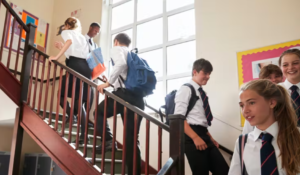How much do schools earn from donations?
Wealthy schools continue to earn millions in school donations, contributing to the resource gap between state schools.

In 2017, a change to school donation schemes saw most schools stopped from asking for donations; however, wealthier schools continue to ask for these donations, creating resource inequity between schools in wealthy and poorer areas.
When he announced the policy in 2017, then Minister for Education Chris Hipkins said school donations created “real unfairness” because “kids whose parents can afford to pay are getting a better deal than those parents that can’t.”
Since then, the government has given schools $150 per student to eligible schools who agreed not to ask for donations except for school camps.
Read the latest print edition of School News HERE
However, students of schools decile eight to 10, or with an equity index number below 431 aren’t able to access this funding and these schools continued to ask their parents for annual donations.
Schools that continue to ask for donations typically receive more than schools can get on government funding, reports RNZ.

They collected data from 200 schools who were ineligible for the government funding, revealing that parents gave a total of around $280 per student when averaged over all the schools. Each school requested different amounts from parents, from $4320 to $15 per student. On average, parents were asked for $358 per student.
The Hutt International Boy’s School requested the most from each parents at $4320 per student, including $380 for the school camp. It raised almost $2.6 million by Nov 1, 2023 for the school year. Other schools also raised over $1m in parent donations, including Auckland Grammar School, Sacred Heart College, Baradene College and Waikato Diocesan School for Girls.
President of the PPTA Chris Abercrombie said that the government’s donation scheme isn’t enough and doesn’t solve the issue it set out to address: inequity between schools.
“We believe it’s the government’s responsibility to fully fund education and not have to rely on basically the generosity of communities. Every parent wants the absolute best for the child, so if they have the ability to do it, they will absolutely give money to their school or time to their school.
“We know schools in wealthier communities can generate a lot more local funding. This really exacerbates the inequality that we see in the education system.”
Less wealthy schools that are ineligible for the government donation are forced to ask for donations to fund services like a special educational needs and disabilities coordinator and teacher aides.

One such kura is Balmoral School in Auckland, which asked parents for $440 per student in 2023. Principal Malcom Milner said around 60 – 70 percent of parents pay this donation and the money goes towards personnel for children with support needs.
“These children are without support unless schools raise money to fund teacher aides to work with them,” said Milner, who added that eligibility criteria to access Ministry of Education funding is strict.
Golden Sands School is another kura who is on the cut-off point of government donation funding.
“We are not eligible for the scheme but miss out on a significant amount of funding due to being a couple of equity points off the cut-off,” said Principal Melanie Taylor.
The school requests $100 per student, raising $25,000 by November 2023. If eligible for the government scheme, the school would have received around $84,000.
Similarly, Cambridge East School is 10 points away from the cut-off for government donations and is missing out on funds. They request $120 per student and have seen a fall in caregivers able to afford the donation, from around 80 percent to 60 percent.
“Schools that haven’t received that extra $150, in recent years, they’re just on a hiding to nothing. I’ve got nothing against targeted funding in regards to the lower socio economic areas. I’ve got no issue with it but it’s just become too difficult for schools that are perceived to be an affluent area, because we’ve still got learners that have all those needs as well,” says Principal Hamish Fenemor.
The scheme was originally put in place to relieve financial burden on households that needed it the most, which is why the top decile schools were ineligible for government donations. Education Minister Erica Stanford said there are currently no plans to change the government donation scheme.









